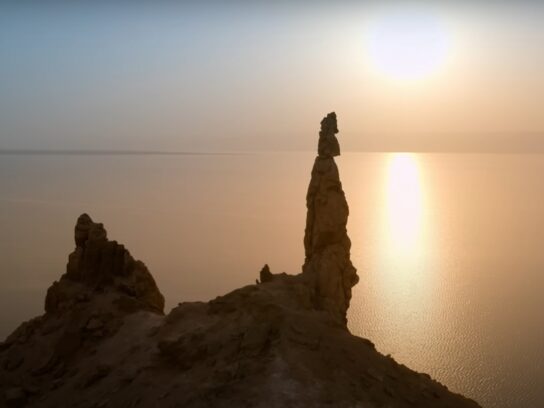
Most Americans have heard the Biblical tale of Sodom and Gomorrah, sinful cities destroyed with fire and brimstone by God, who spared only Lot and some of his family. So, why not travel there and see the wrath of God in person, and become true Christian believers? Unfortunately, Biblical scholars and archaeologists have only narrowed down the locations to somewhere around the Dead Sea, an area of about 1625 square miles, 27 times larger than the District of Columbia! Hard to cover that much ground in a 10-day vacation. And no-one has figured out exactly how God (or nature) destroyed those nasty cities.
This month I will outline various possible locations for Sodom and Gomorrah; next month I will describe the expedition I joined to excavate one location; and then in part three I will explore the relationship of Sodom to modern beliefs about homosexuality.
The earliest reference to Sodom is on tablets discovered in 1975 in Syria at Tell Mardikh, ancient Ebla. These tablets date to about 2400 BCE and include a sequential geographical listing of Ebla’s trading partners, including “number 211, Sodom,” apparently on the central east coast of the Dead Sea.
Flavius Josephus, the famous Jewish historian, writing in 93 CE, identified the Dead Sea as the general area of Sodom, which he called Asphaltites, and said that, “Lot possessed the land of the plain and the River Jordan, which is not far from the city of Sodom…now destroyed by God.” This is helpful but confusing. The name “Asphaltites” relates to “asphalt,” which was found and mined near the south end of the Dead Sea in a natural form as bitumen. But the River Jordan enters the Dead Sea at its north end, not its south. Josephus says the city was “destroyed by lightning.”
The Bible has numerous relevant references in the Old Testament (canonized about 550 BCE) and the New Testament (c. 100-200 CE) and mentions the five “Cities of the Plain” of Sodom, Gomorrah, Admah, Zeboiim and Zoar. As described in Genesis chapters 13, 18 and 19, the first four cities and their region were destroyed by God, but Zoar survived and it was near Zoar that Lot lived in a cave, after escaping the rain of “fire and brimstone”.
The Koran (or Quran, written from 610-632 CE; in Surahs 11 and 15) states that messenger-angels of Allah came to Abraham and told him that Sodom was to be destroyed, because of its “rebelliousness,” but Abraham protested that the virtuous Lot and his family were there. The angels said that Lot and his family would be spared, except his wife, “who is one of the doomed.” The city was destroyed by being “turned upside down” and it was rained on by “clustered stones of baked clay.” Its location is not specified, but is clearly near the Dead Sea.
A 1752 “Accurate Map of Canaan” in the Golden Map Collection at the National Library of Israel shows the Dead Sea as “Lake Sodom,” with Sodom underwater in the middle of the north end of the Lake, and Gomorrah underwater near the middle of the southern end. Since 1752 the southern end of the Sea has partially dried up, and has been examined. No relevant archaeological sites have been found.
Many modern Jews, Muslims and Christians believe that Sodom is located at or near Mt. Sodom and the mining town of Sedom, on the southwest Dead Sea shore, and that the doomed wife of Lot is present in a large tower of rock salt on the mountain. However, there is no archaeological evidence for this location. And the “Tower of Lot’s Wife” is described by geologists as a natural formation that is the result of weathering and cracking off the Mountain, which is five miles long and 80 percent rock salt.
Some Christian analysts (e.g., HolyLandSite.com) agree that Sodom is near Mt. Sodom, and argue that Gomorrah is beside the towering fortress of Masada, about 27 miles north of Mt. Sodom on the west side of the Dead Sea, and that Zoar is near the SW tip of the Dead Sea. But they do not cite any archaeological evidence, only an abundance of sulfur and numerous shapes that they think look like destroyed buildings. In fact, these are natural geological shapes similar to the hoodoos of Utah.
Engineer and archaeologist Bryant G. Wood argued in 1999, 2008 and 2017 that Sodom is the modern Bab edh-Dhra and Gomorrah is the modern Numeria, both on the south-central east side of the Dead Sea. His evidence is that these were the only large urban archaeological sites from the right era (the Middle Bronze Age (MBE), 2000-1500 BCE) found in the area; that bitumen was found near the southern basin of the Sea, and not elsewhere; and that the Dead Sea was much lower during this period, and thus the part of the Sea near the cities was a fertile plain (as in “the Cities of the Plain” in the Bible), not a very salty lake.
Furthermore, according to Wood, excavations of both towns show massive destructive layers that correspond to the Biblical descriptions. Wood agrees with geologists such as Graham Harris and Tony Beardow that the destruction was likely caused by earthquakes, liquefaction, and eruptions of burning bitumen and sulfur rock (brimstone). Harris and Beardow state that “a similar event with loose, waterlogged soil destroyed an area of 30,000 square miles in China in 1920” (!).
However, arguments against this theory include: the supposed Sodom is acknowledged to be quite small, only about 600-1200 in population, with only 9-10 acres inside the fortified area; the fact that a very large tel – a manmade mound – has been found near the NE corner of the Dead Sea, and this tel was inhabited during the MBE; the rather odd description of the destruction as being seen as “thick smoke coming up from the ground and town,” with no real explanation for the ”goprit wa es” (sulfurous oil and fire) that rained down from the sky; and the possibility that an alternate location for the crucial “Plain” can be identified.
We will turn to that alternate site next month.
Meanwhile, stop all that sinning, in case you and your town get hit by fire and brimstone!
Photos courtesy Lew Toulmin
- 1. Map of the Dead Sea from the Ebla geographical tablet list of 2400 BCE, showing Site 210 as Admah and 211 as Sodom, both “Cities of the Plain.” Here the Plain is the southern Dead Sea itself, which was supposed to be much lower at that period, and hence was a fertile plain. This Ebla tablet is the only documented reference to Sodom outside of the Bible or Koran. The Mediterranean Sea is shown in the upper left.
- 2. Lot’s Wife pillar of rock salt, part of Mt. Sodom, on the west side of the Dead Sea.
- 3. Lot’s Wife pillar of rock salt, on the east side of the Dead Sea, near modern Bab edh-Dhra, which is possibly ancient Sodom.
- 4. “Lot Fleeing from Sodom” by Benjamin West (1810) shows Lot and his family escorted by two angels, fleeing Sodom, shown in the far left. Lot’s wife is turning back to look at the destruction. Mistake!
- 5. A 1752 “Accurate Map of Canaan” shows the Dead Sea as “Lake Sodom,” with Sodom underwater in the middle of the north end of the Lake, and Gomorrah underwater near the middle of the southern end. The latter assertion has been disproved.
- 6. Map (2015) of the Dead Sea by geologist Graham Harris, showing Sodom on the east side of the Dead Sea. Note the locations of Mt. Sedom, Jerusalem, Jericho and the Jordan River.
- 7. Conception by HolyLandSite.com of the locations of Gomorrah (near Masada), Sodom (near Mt. Sodom) and Zoar (on the SW tip of the southern basin of the Dead Sea, out of view to the left). No archaeological evidence is provided or available. North is to the upper right.
- 8. Artist’s conception of Sodom on a hill or tel east of the Dead Sea, just before being hit by an earthquake and an eruption of sulphur and bitumen. Based on archaeological evidence, this town or village had a population of less than 1200 and covered only about 9 acres, quite small.
- 9. Tectonic plate fault lines running along the sides of the Dead Sea, part of the Great Rift that runs from Israel to southern Africa. These faults could have caused earthquakes that destroyed Sodom and Gomorrah. Jerusalem is just out of sight, W of the NW corner of the Dead Sea.


































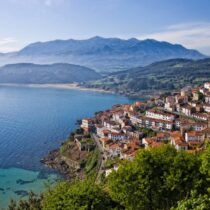



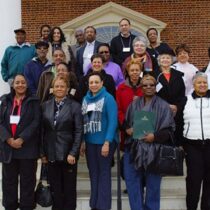



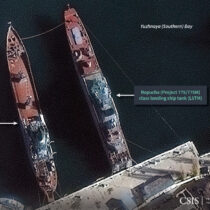

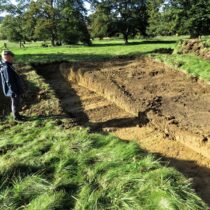
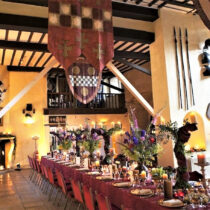


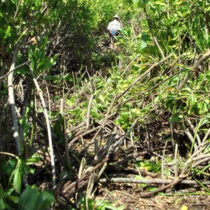





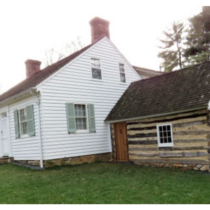
Comments are closed.